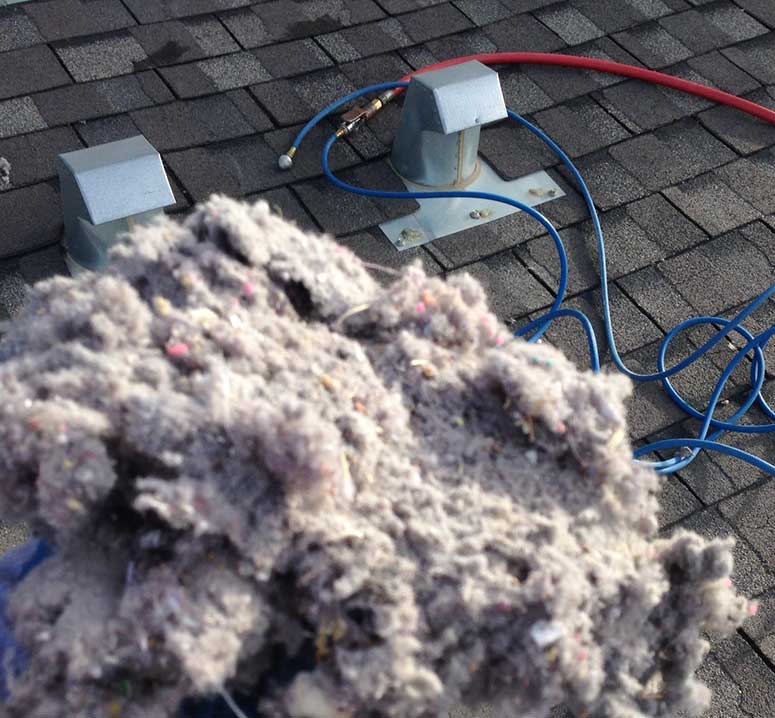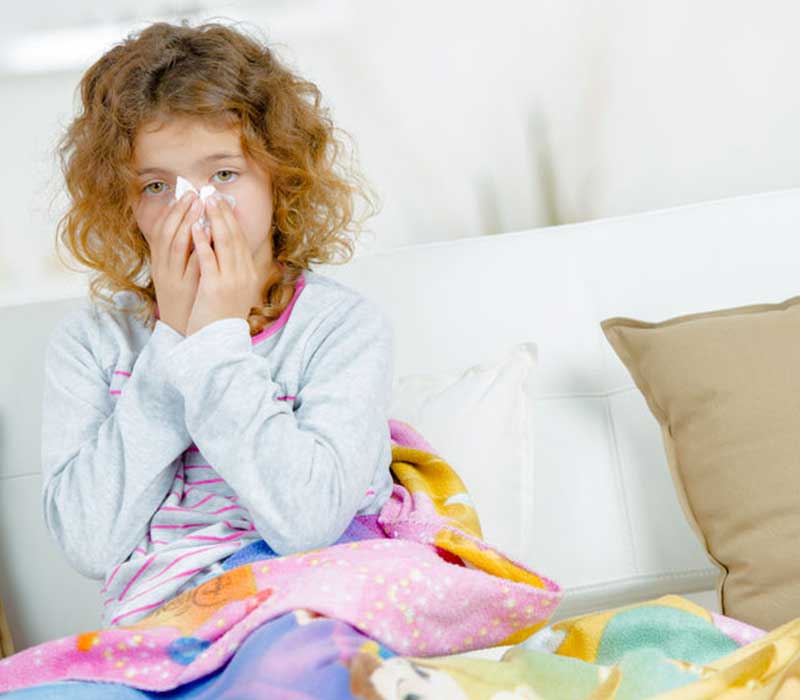Calgary Indoor Air Quality
Low indoor air quality is a growing problem, especially during the winter months. Learn about the sources, causes and effects of this typical problem in Calgary, Alberta.
Don't Let Poor Indoor Air Quality Affect Your Health and Wellbeing
Feeling tired all the time? Often sick? Breathing related problems? There is a good chance low indoor air quality is causing these issues.
Poor indoor air quality is registered in a large percentage of Canadian homes every year. Houses in northern latitudes tend to cut off outside air with insulation and air sealing during the winter months, causing pollutants and irritants to trap and recycle in the house, sometimes for years!

What is the Source of Poor Indoor Air Quality?
You may be wondering what exactly is in your air that is lowering the indoor air quality in your home. Here are a few of the most prominent sources of poor indoor air quality.
Pollutants, Contaminants and Allergens
Indoor pollution that releases gases or particles into the air is the primary source of indoor air quality problems in homes. But where does it come from? Here are some of the major sources of pollutants, contaminants and allergens in your home:

These microscopic creatures are present in almost every home, no matter how clean and disinfected it may be, and they don't pose a threat to us in small numbers. But when the dust mite population gets out of control, they're not just lurking in the far reaches of our homes—the mites themselves are floating in the air, along with their waste, which is a big cause of dust-related allergies.
VOCs are essentially organic compounds with a high vapour pressure, meaning the molecules can move through air easily. This trait is called volatility. VOCs are typically man-made chemicals such as solvents, disinfectants, glue, epoxy, pesticides and harsh cleaning products. They can also be released from fabric such as upholstery that has been treated with chemicals in the manufacturing process.
Microorganisms are everywhere, and they're not all bad—in fact, many of them are very beneficial to humans. But microbial growth such as mould spores, mildew, fungi and bacteria lower the quality of indoor air and can have serious health effects, especially on vulnerable people.
Modern buildings are very complex and can contain a lot of materials that release allergens and contaminants into the air. That certainly includes dust—drywall, for example, is made of a soft, sulfate mineral that can easily crumble apart and release copious amounts of dust. But various
It's no secret that cigarette smoke has a huge negative impact on indoor air quality, and that impact lingers long after the last cigarette is extinguished. Smoke can also come from fireplaces and cooking tools such as your oven, stove and toaster.
Just like cooking food can give off smoke, it can also release particles of oil, fat or food into the air that impact indoor air quality in a big way. This is especially true of food that is being fried in oil.
Cats and dogs are a treasured part of many peoples' home lives, and anyone who lives with a furry friend knows that their fur ends up all over the place. With it comes dander, particles of skin and mites that float through the air and lower indoor air quality, as well as exacerbating allergy conditions.
If you've been living in Alberta over the last few years, you know all too well that wildfires, even those that are burning hundreds of kilometres away, can cause thick clouds of choking smoke that leave you with a sore throat and cough. Most people do whatever they can to keep the smoke outside so they can have some respite indoors, but that's easier said than done and it tends to creep in no matter what you do. One of the biggest issues with forest fire smoke is that once it gets inside, it can stick around and compromise your indoor air quality even after the air has cleared outdoors. That's one major reason why it's so important for Albertans to invest in air filters and other indoor air quality solutions that can clean smoke particles out of the air and let you breathe easily again.
What Causes Poor Indoor Air Quality?
The sources of poor indoor air quality that we listed above have the potential to be present in any building, and in some cases, they can't be avoided. So what makes the difference between a home with poor indoor air quality and a home with good indoor air quality if all buildings contain at least some contaminants, pollutants and allergens?
It really comes down to how effectively existing pollutants are being removed from the building, if they are being removed at all, and how effectively additional pollutants are being prevented from entering the building.
Indoor Air Quality in Calgary
Here are a few of the biggest causes of poor indoor air quality in Calgary.
Inadequate ventilation can increase indoor pollutant levels by not bringing in enough outdoor air to dilute emissions from indoor sources and by not carrying indoor air pollutants out of the home.
When not enough outdoor air enters a home, pollutants can accumulate to levels that can pose a threat to your health and comfort. Unless they are built with special mechanical means of ventilation, homes that are designed and constructed to minimize the amount of outdoor air that can “leak” into and out of the home may have higher pollutant levels than average homes. This is true of most houses built in and around Calgary due to the extreme winter temperatures we experience and the need to prevent heat loss.
However, because some weather conditions can drastically reduce the amount of outdoor air that enters a home, pollutants can build up even in homes that are normally considered “leaky” or have acceptable levels of ventilation.
Most HVAC systems include air filters, and for obvious reasons, they are a key tool for improving your indoor air quality. But just having air filters in place isn't enough—you need to ensure that they are of a high quality and that they're being changed as needed.
Indoor air quality becomes even worse if the air filters in the house are substandard in quality or need to be replaced. As a result, it's very important to make sure you not only have adequate air filters in place, but also that they are being swapped out regularly. A dirty air filter can actually be more detrimental than no air filter at all in some cases. Fortunately, they're typically very easy to change. The frequency at which you need to change air filters will vary based on the thickness of the filter your system uses, so it's a good idea to refer to the manufacturer's instructions.
The most common types of HVAC systems in Calgary by far are furnaces and air conditioners that utilize "forced-air" systems, meaning they use internal ductwork to move heated or cooled air around a building and deposit it into rooms via registers. While the air does typically pass through a filter before it moves into the ducts, the ductwork itself can accumulate a build-up of dust, grime, dander and other allergens and pollutants that get carried along with the air and spew out of the registers.
Dirty air ducts are often the source of the problem when it comes to poor indoor air quality in Calgary. Even the most meticulous-looking home can hide these dirty ducts behind a clean facade, because most homeowners don't have the tools or expertise necessary to deal with air duct cleaning. It's a job that needs to be handled by professionals on a regular basis to ensure that your forced-air system isn't the main culprit behind lowered air quality in your home.
You might diligently vacuum your carpets once a week or even more, but that doesn't mean they're completely free of dust, mold growth and other allergens that are worked into the fibers of the carpet and can be released when the carpet is disturbed by footsteps or even the actual process of vacuuming. Ultimately, vacuuming alone is not enough to preserve the quality of your indoor air. Those who are serious about maintaining high indoor air quality should consider professional carpet cleaning services that include disinfectant capable of removing 99.9% of the microbes it comes in contact with.
Of course, carpets aren't the only fabric items in your home that can attract and lock in allergens and microorganisms. Most furniture, from sofas to mattresses, is made of porous fabric that is a beacon to contaminants of all sorts, and upholstery is a challenge to clean properly because there is so much fabric and it can't necessarily get wet. Upholstery cleaning can involve the use of the same disinfectant that is applied to carpets in order to remove microbes and make a noticeable difference to indoor air quality.
This is a cause that actually comes as a surprise to most people, because it's not talked about as often as other issues such as dust build-up. The air we breathe outdoors is purified naturally by ultraviolet (UV) rays from the sun, which halt the growth and proliferation of bacteria, viruses, germs and other types of bioaerosols. But those UV rays don't make their way inside your house in a significant way, so they can't perform the same function to improve your indoor air quality the way they do for the quality of air outdoors.
There is, however, an option available to bring the germ-killing power of the sun inside: UV light air purification.
This technique involves the use of a UV lamp that is installed inside your HVAC ductwork to clean the air from your furnace or air conditioner as it passes through the ducts. Since our buildings in Calgary are air-sealed to maintain energy efficiency, this is an excellent way to help improve indoor air quality in local homes and businesses.

What Are the Effects of Indoor Air Pollution?
Health issues consequent of low indoor air pollutants may be experienced soon after exposure or possibly years later. While the health of your family and household members is, of course, the most important consideration, it's worth noting that poor indoor air quality can also impact your home and even your bank account.
Health-Related Signs and Symptoms
Children, elderly people, and at-risk individuals usually experience the health-related effects of poor indoor air quality first. Certain immediate effects are similar to those from colds or other viral diseases, so it is often difficult to determine if the symptoms are a result of exposure to indoor air pollution. For this reason, it is important to pay attention to the time and place symptoms occur. If the symptoms fade or go away when a person is away from home, for example, an effort should be made to identify indoor air sources that may be possible causes. Some effects may be made worse by an inadequate supply of outdoor air or from the heating, cooling, or humidity conditions prevalent in the home.

Signs and Symptoms
Signs and symptoms caused by poor indoor air quality can mimic many diseases and health conditions.
That includes issues such as:
- Recurring sickness ( constantly getting sick )
- Constant coughing
- Stuffy nose
- Headaches
- Difficulty breathing
- Problems concentrating ( “hazy feeling” )
- Flu and cold like symptoms
- Fatigue
- And more
If the problem isn't resolved and your indoor air quality remains poor, it can lead to more serious long-term effects such as chronic respiratory disease, chronic fatigue and other issues.
While pollutants commonly found in indoor air are responsible for many harmful effects, there is considerable uncertainty about what concentrations or periods of exposure are necessary to produce specific health problems. People also react very differently to exposure to indoor air pollutants. Further research is needed to better understand which health effects that occur after exposure to the average pollutant concentrations found in homes.
However, one conclusive fact is that the lower the indoor air quality of your home is, the higher the likelihood to experience the above mentioned effects on your health. It is therefore prudent to try to improve the indoor air quality in your home even if symptoms are not noticeable.
Effects On Your Home
Poor indoor air quality doesn't just affect the health of your family and household, it can also have a negative impact on your home and energy costs.
Dust Everywhere
Have you ever cleaned your house from top to bottom, only to look around a couple of days later and see dust collecting on all the surfaces you carefully wiped down? Or, when a shaft of sunlight beams through the window, does it highlight all the dust particles floating around in the air? When dust is coming from dirty air filters or HVAC ductwork, you can clean all day, every day and your house still won't look or feel clean.
Higher Energy Costs
You can have issues with indoor air quality that don't raise your energy expenses, but if the problem is being caused by dirty air filters, it's safe to say that you're paying more than necessary on your monthly utility bills. Your HVAC needs to consume a lot of energy to keep your house heated or cooled, so it represents a large portion of your energy costs. But when it is struggling to operate with old air filters that are caked in grime and dirt, it has to work much harder to force the air through the damaged, clogged filters. That additional operation time means your energy charges are going to go up, and it also increases wear and tear damage on your HVAC system so you need more frequent repairs and replacements.
